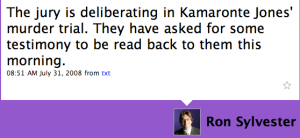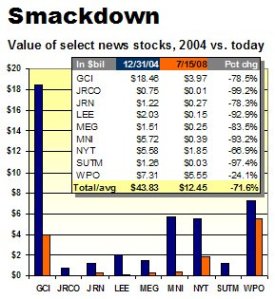Steve Outing and Chris Ryan have a great new website, ReinventingClassifieds.com. Steve asked me for a piece. Here’s what I sent him.
Second thoughts of a publisher turned professor
In nine months since I was carried from the bloody arena of the newspaper business and ascended to the ivory tower, I’ve gained this perspective: Most newspapers don’t need the best new idea to grow their classifieds business. They mostly need to get better at executing what they already know.
I’m not an expert on classified advertising, so I can’t offer advice to anyone else. Here are a half dozen things I wish I’d done about classifieds and what I would do today:
· Stop obsessing about the national trends. Here in flyover country, there was no real estate boom and there’s no bust. Employment numbers remain healthy. Wichita Craigslist has been around for a few years, but hasn’t become an established marketplace in any vertical. It isn’t too late to save the business in Wichita or lots of other places in America.
· Invest in technology. We dithered endlessly over how to get our advertising and accounting systems to talk to each other. We found a hundred barriers to having our customers place and price their own ads. I should have been more insistently impatient about finding and financing solutions.
· Invest in people. Newspaper/internet outside salespeople should be the most qualified and the best paid in the market. They should have the technical and clerical support they need to focus their time on selling to auto dealers, Realtors, employers and employment agencies. That wasn’t true at any of the newspapers I worked at over a span of 35 years.
· Get rid of the newspaper/internet pricing silos. Advertisers should be sold eyeballs, not platforms. Companies allocate revenue to make their web operations look better at the expense of their newspapers. No wonder people think newspapers are failing. The truth is, the local newspaper and its website are a dynamite combination. Sell them that way.
· Stop tinkering with in-paper presentation. If the type is readable and the classifications are clear, readers will find and act on the ads. No amount of tweaking the color and headers and unpaid content will make a material difference in profitability.
· Promote. Promote. Promote. God should strike us down for cutting the classifieds promotion budget year after year. We got the results we paid for.




 I’m intrigued by the possibilities presented by the
I’m intrigued by the possibilities presented by the 






